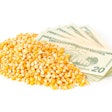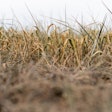It is often said that grain quality can never improve after it's been harvested. No matter how well an elevator dries their grain, monitors its bin temperature, manages moisture and controls pests, not much can be done to bring the quality up a notch once it's taken from the plant. For the most part, this notion holds true with the exception of one measure: grain cleaning. Taking this step right after harvesting can get the whole process off to a smooth start. While grain cleaning doesn't physically add anything to the grain, it certainly adds value by removing foreign materials, making it a more marketable product.
Clean grain is achieved through a variety of products such as screens, vibrators, scalpers and aspirators. Grain passes over screens while different sized holes allow unwanted pieces to fall through, leaving only the desired size or shape grain behind. Also, grain is screened to remove oversized and foreign materials. Elevator operators determine how much foreign matter, or dockage, to remove based on specifications handed down from their customers or the Federal Grain Inspection Service. These specifications depend on the type of grain and its intended destination.
According to experts in the cleaning field, the dockage is the most important player in the grain cleaning game. Knowing the desired specifications is a good starting point, but developing the best cleaning approach to achieve those specs depend on what you need to remove from the incoming product.
Defining dockage
Dockage refers to several types of foreign materials such as straw, chaffs, hulls, seeds, dust, sand, pests and damaged or immature kernels. The FGIS puts strict standards on how much of this material can be present within the crop. The website has published the official U.S. standards for all grains, such as corn, barley, wheat, soybeans and sorghum, among others.
The FGIS defines dockage differently for each grain. According to the FGIS website, corn dockage is-

















